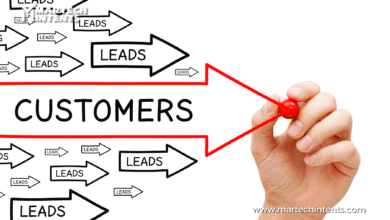Real-World Martech Integration: Building Cohesive Ecosystems

Introduction:
Martech integration is the key to creating a seamless marketing ecosystem. In this article, we will explore the importance of integrating various martech tools and platforms using real-world examples. We will provide guidance on system integration, data flow, and interoperability to help you build a cohesive Martech landscape.
I. The Power of Martech Integration: Real Examples of Success
Salesforce and Marketo: Integrating Salesforce CRM with Marketo’s marketing automation platform allows for seamless lead management, automated campaigns, and improved sales and marketing alignment.
HubSpot and Mailchimp: By integrating HubSpot’s inbound marketing tools with Mailchimp’s email marketing capabilities, businesses can create targeted email campaigns based on customer behavior and engagement data.
II. Selecting the Right Tools for Martech Integration
Evaluate the compatibility of martech tools: For instance, Adobe Analytics and Google Ads integration provides valuable insights into campaign performance and enables data-driven decision-making.
Choose tools with robust APIs: Platforms like Zapier or PieSync offer extensive integrations and can connect various martech tools without extensive coding or development efforts.
III. System Integration Strategies: Real-World Implementation
API-driven integrations: Using APIs, businesses can integrate platforms like Shopify, WooCommerce, or Magento with their CRM systems to enable seamless e-commerce data synchronization.
Data lake or data warehouse integration: Companies can consolidate customer data from multiple sources, such as social media platforms, email marketing tools, and CRM systems, into a central data repository for advanced analytics and personalization.
IV. Overcoming Martech Integration Challenges with Real Solutions
Integration platforms like Dell Boomi or MuleSoft provide visual tools and pre-built connectors to simplify the integration process, enabling seamless data transfer and reducing technical complexities.
Data mapping tools, such as Talend or Informatica, help align data structures and ensure smooth data flow between different martech systems.
V. Benefits of Martech Integration: Real Impact on Marketing
Improved customer segmentation and personalization: Integrating Customer Data Platforms (CDPs) with marketing automation tools enables businesses to deliver targeted campaigns and personalized experiences at scale.
Enhanced reporting and analytics: Integrating Google Analytics with data visualization tools like Tableau or Power BI provides comprehensive insights, enabling data-driven decision-making and optimization of marketing strategies.
Learn more about Exploring the Cutting-Edge: Real-World Examples of the Latest Trends and Innovations in the Martech Industry
Conclusion:
Martech integration is essential for building a cohesive marketing ecosystem. Real-world examples demonstrate the power of integration in improving lead management, campaign automation, and data-driven decision-making.
By selecting the right tools, implementing effective integration strategies, and overcoming challenges with real solutions, businesses can unlock the full potential of their martech stack.
Embrace martech integration to drive seamless customer experiences, enhance marketing performance, and gain a competitive edge in today’s digital landscape.




